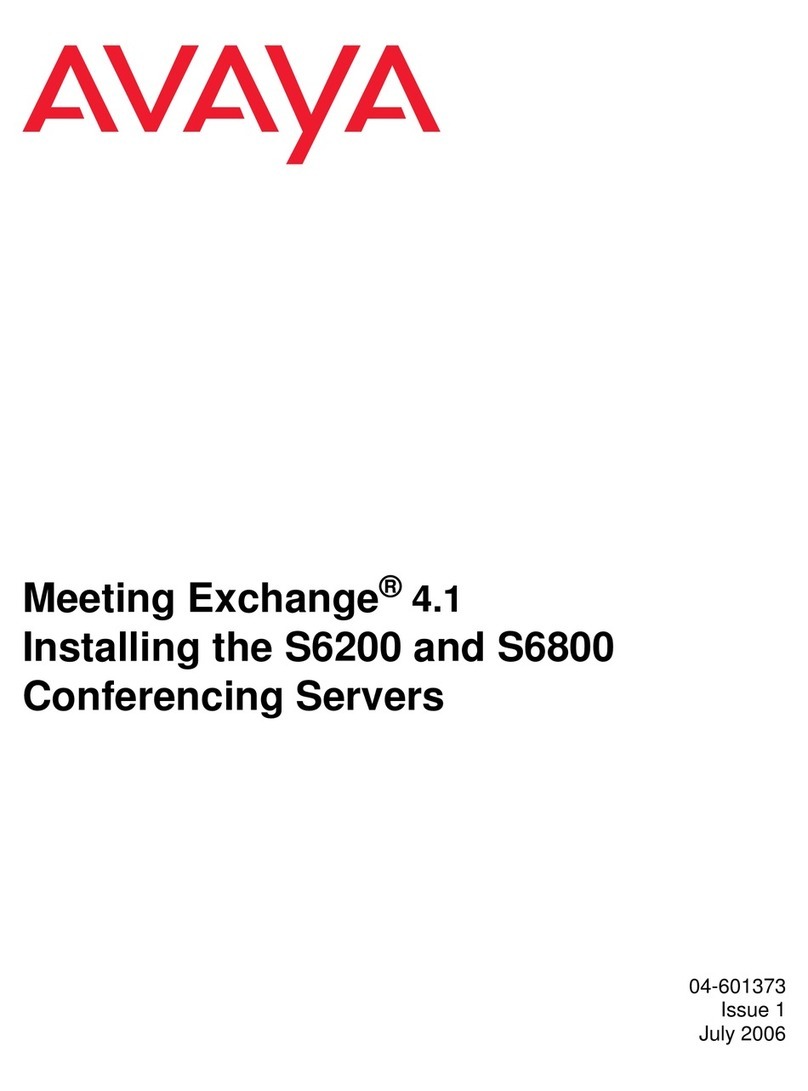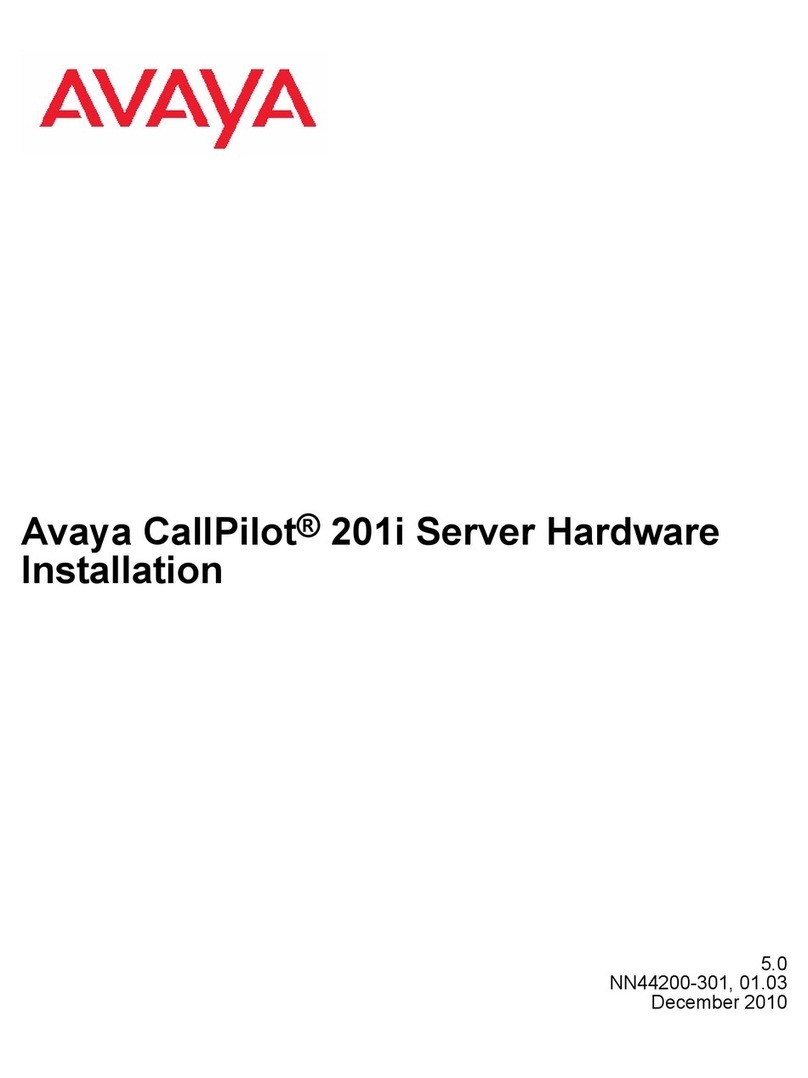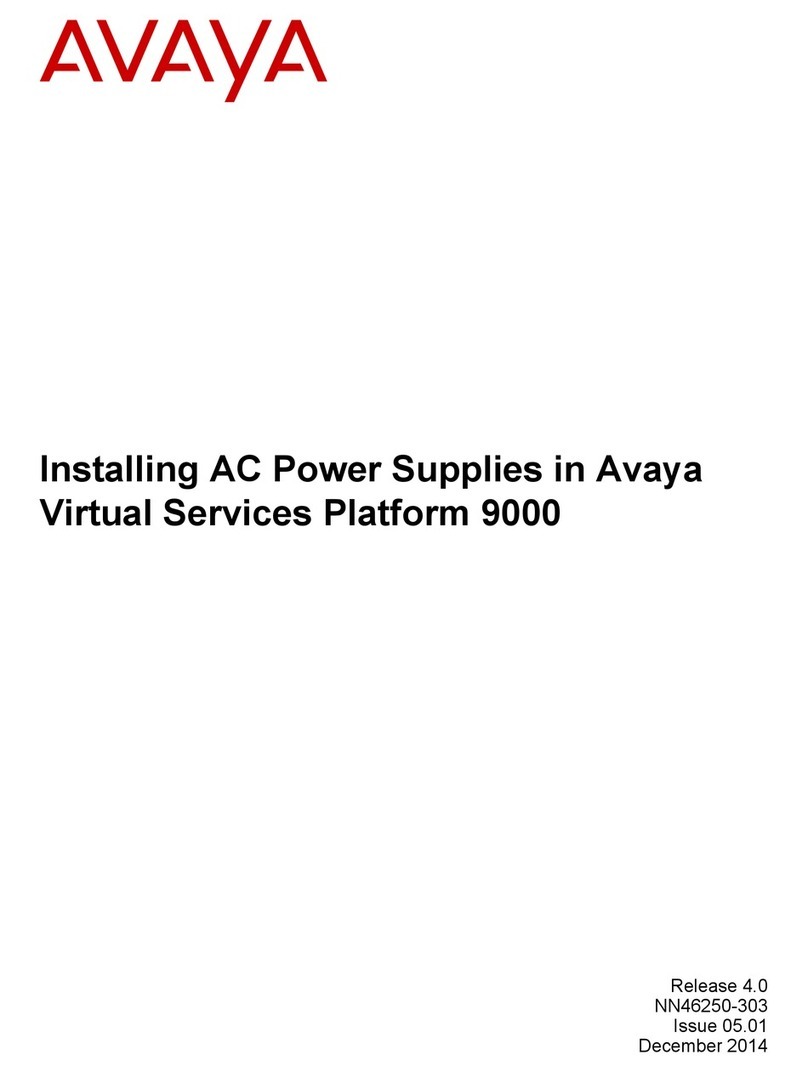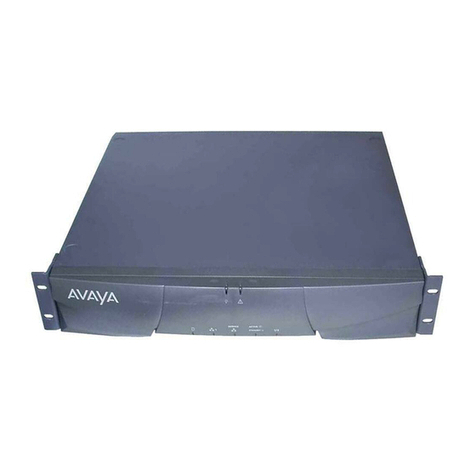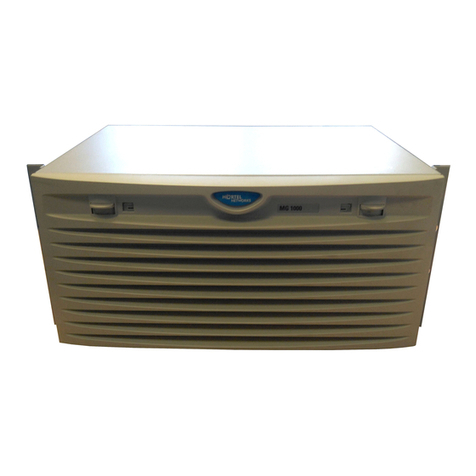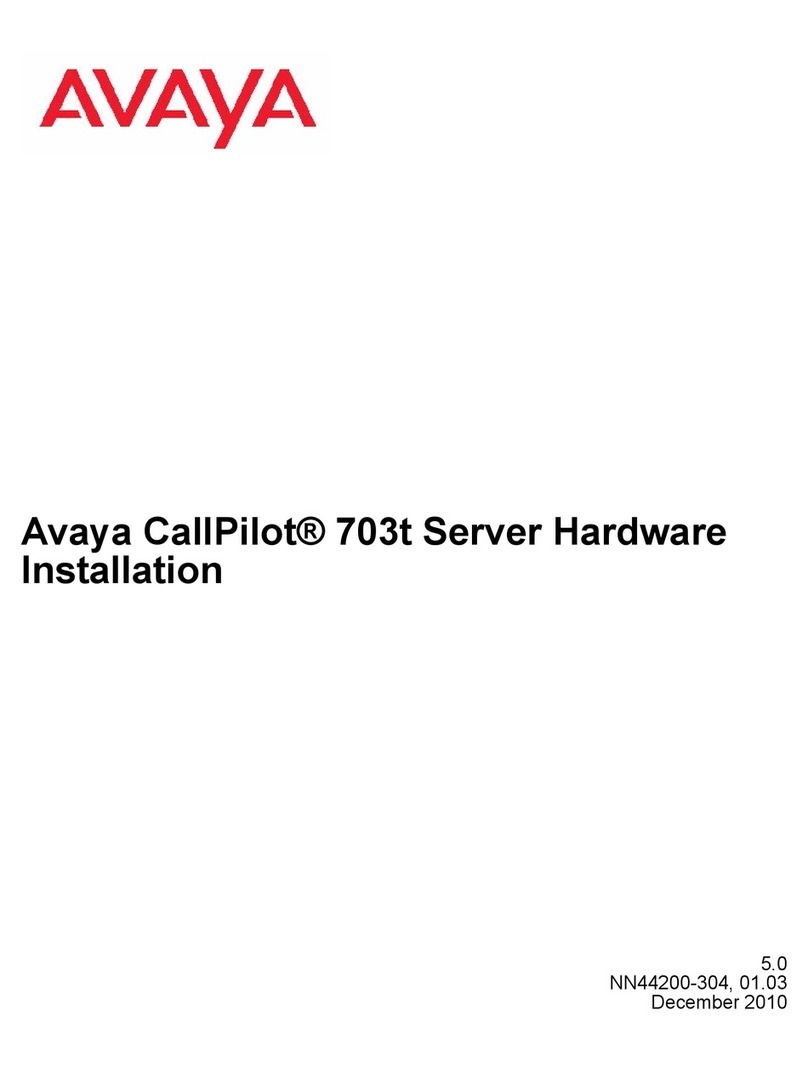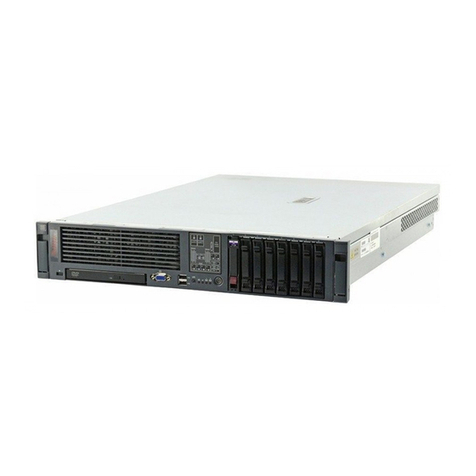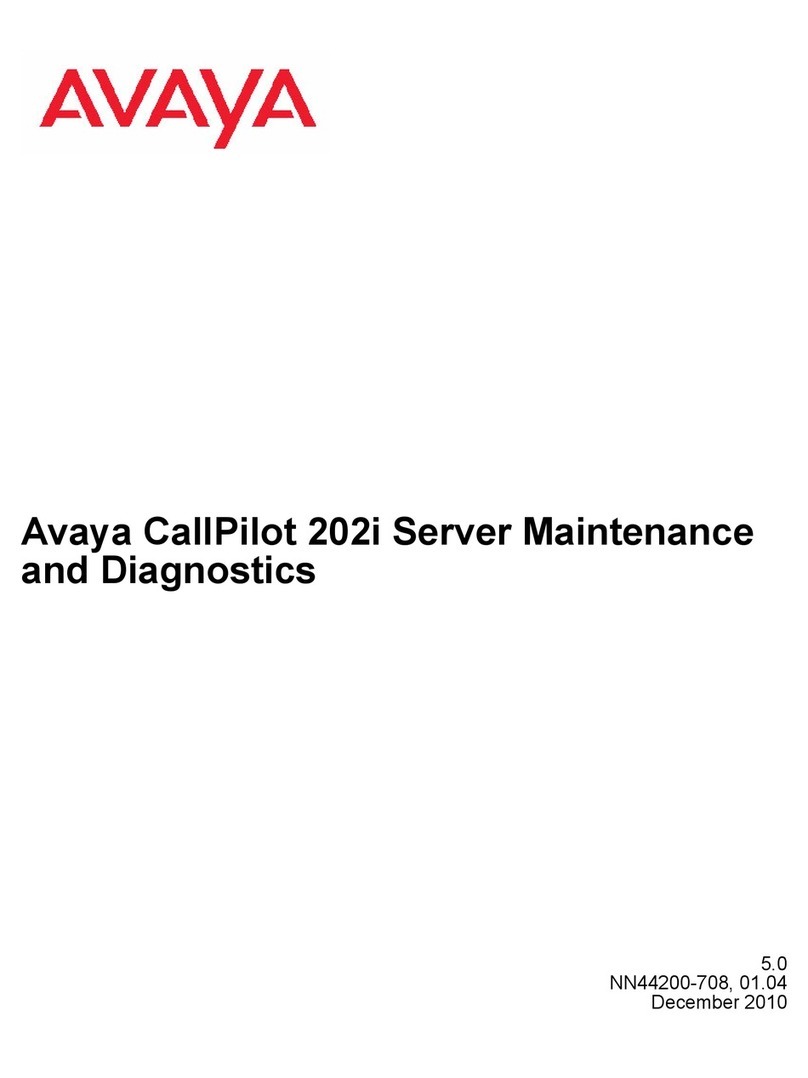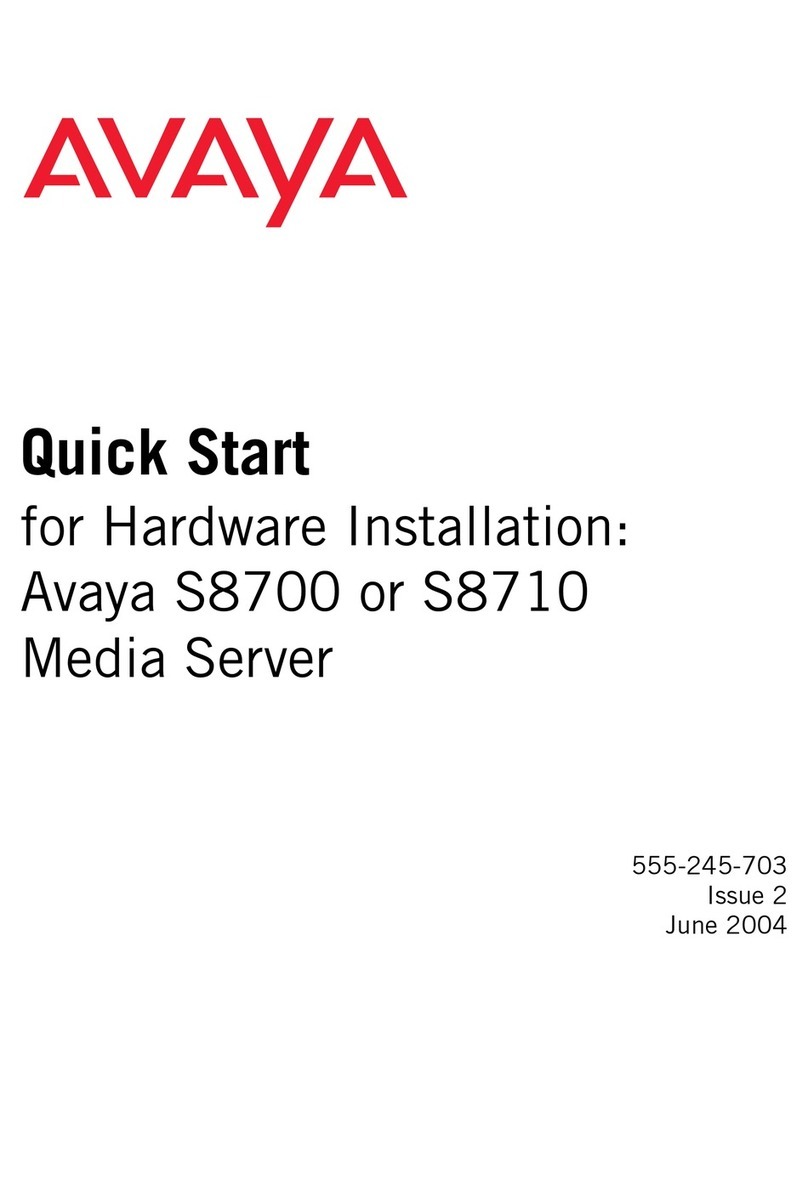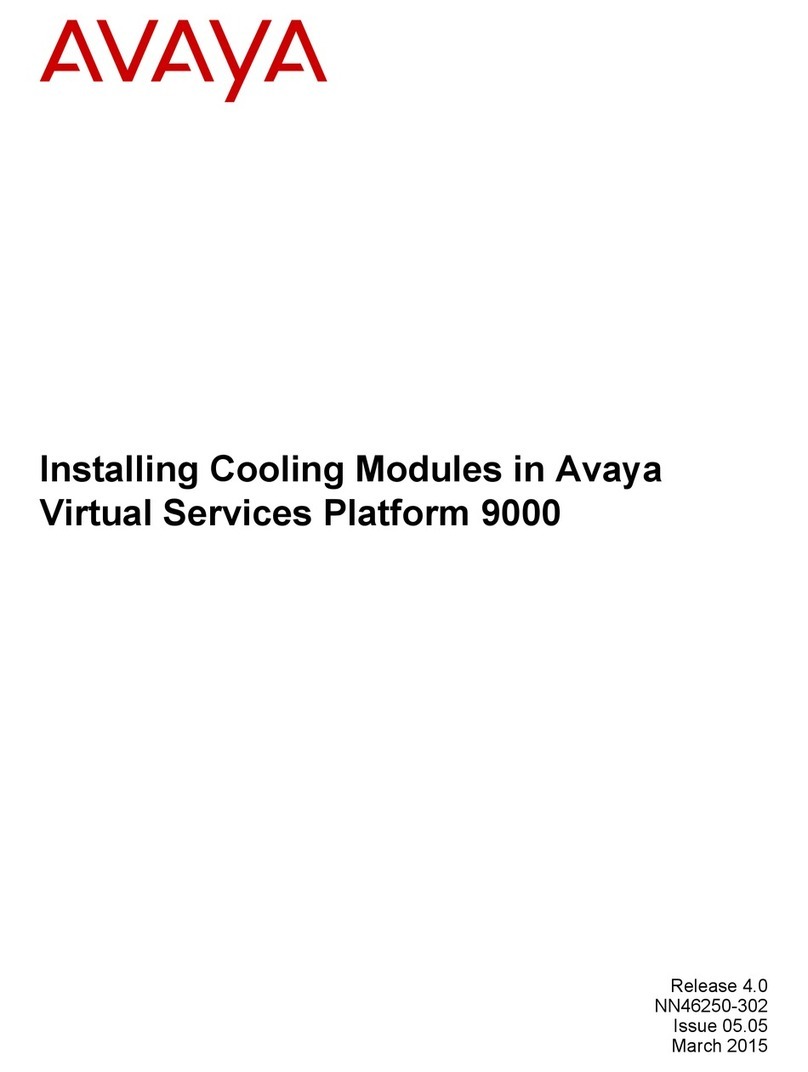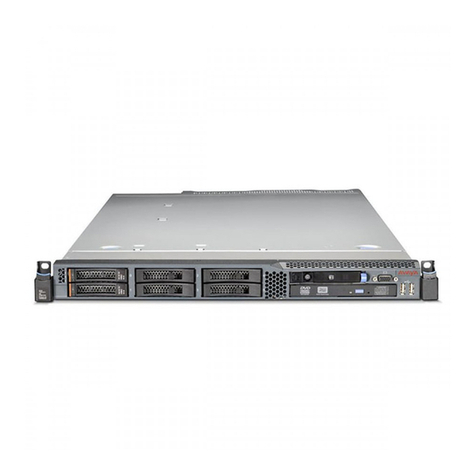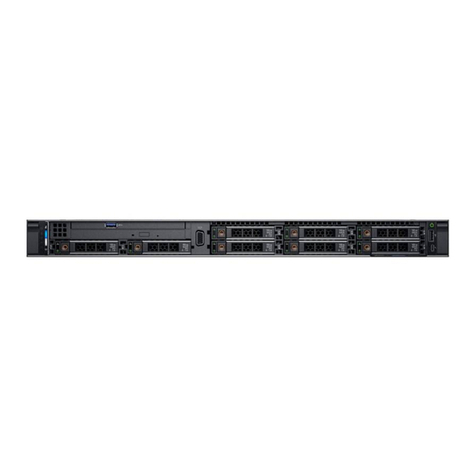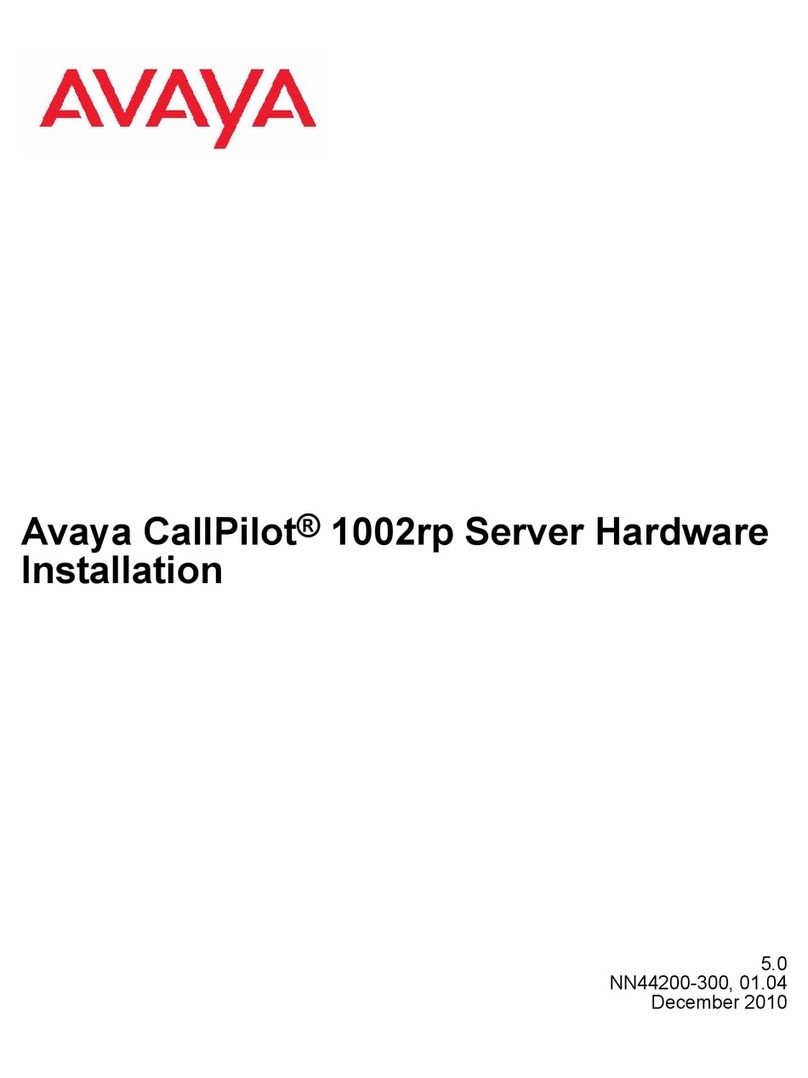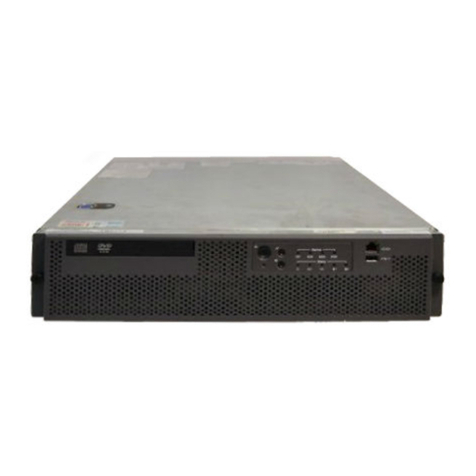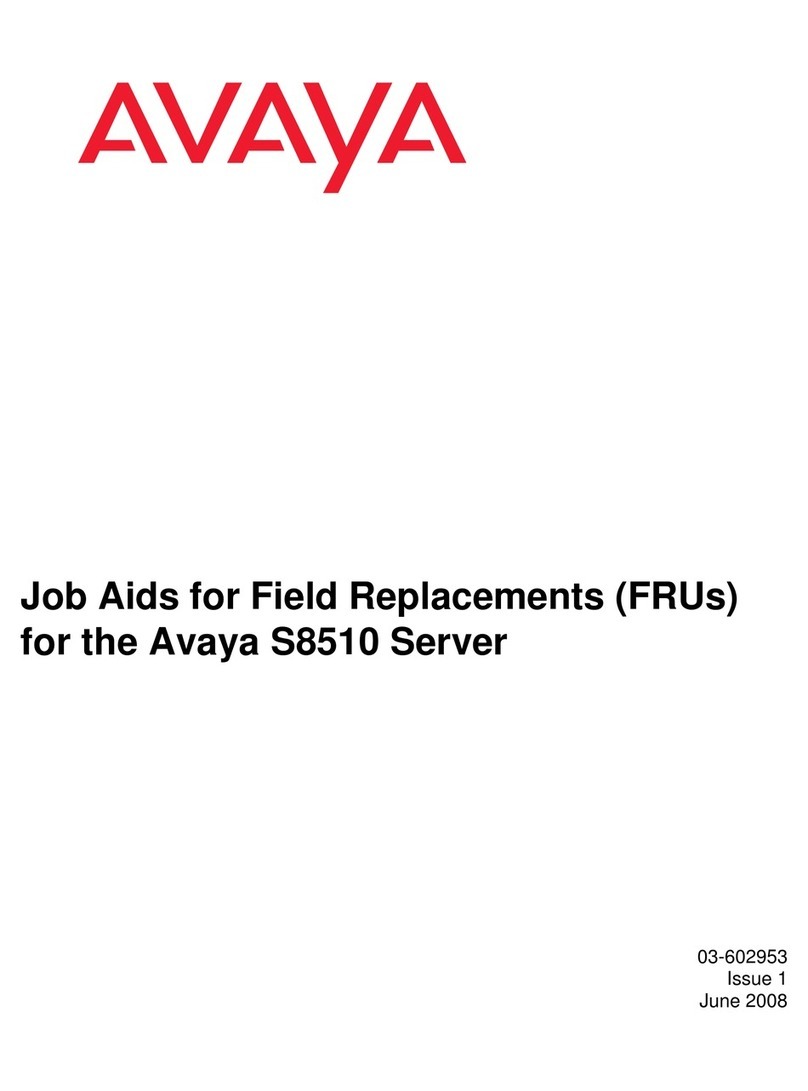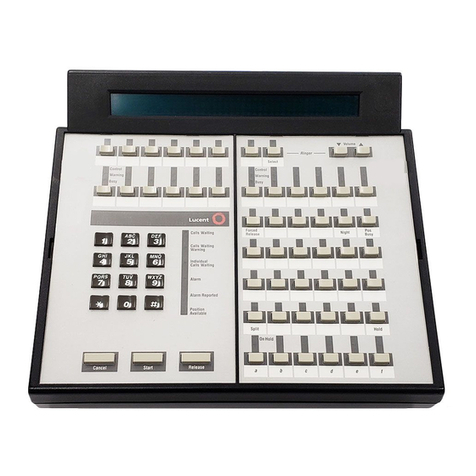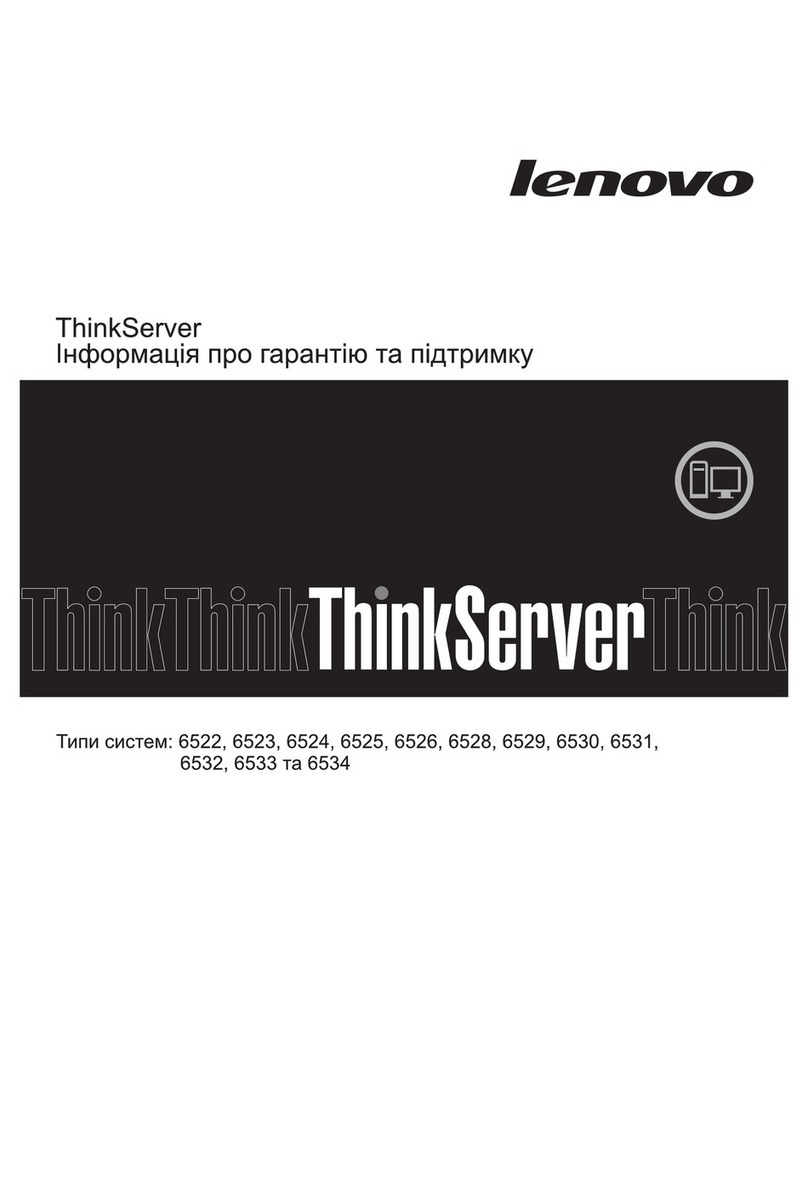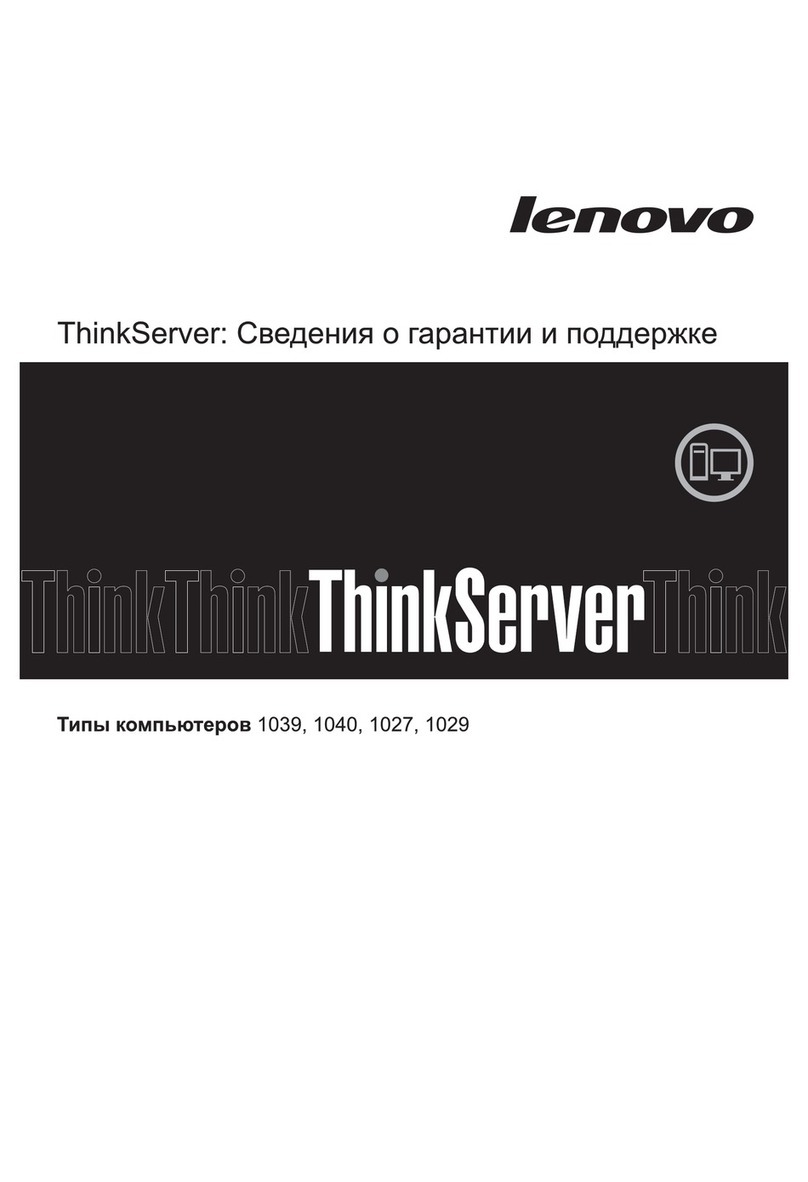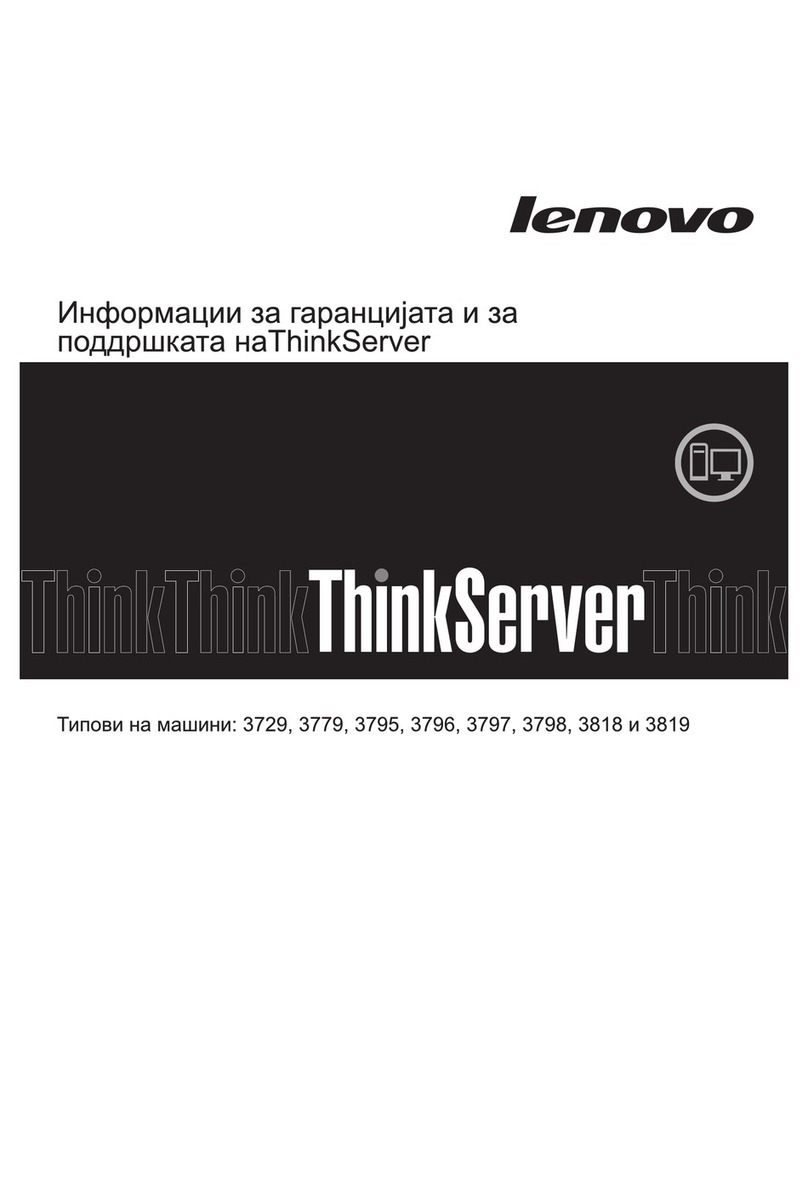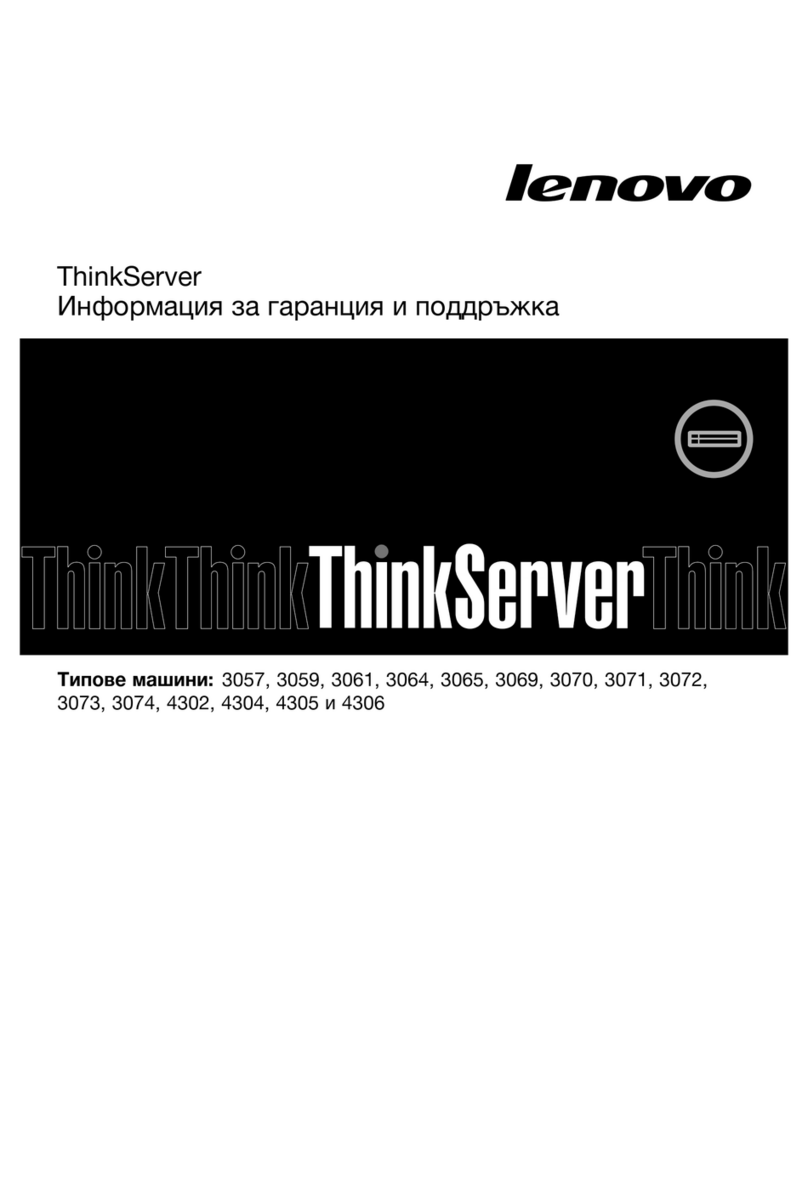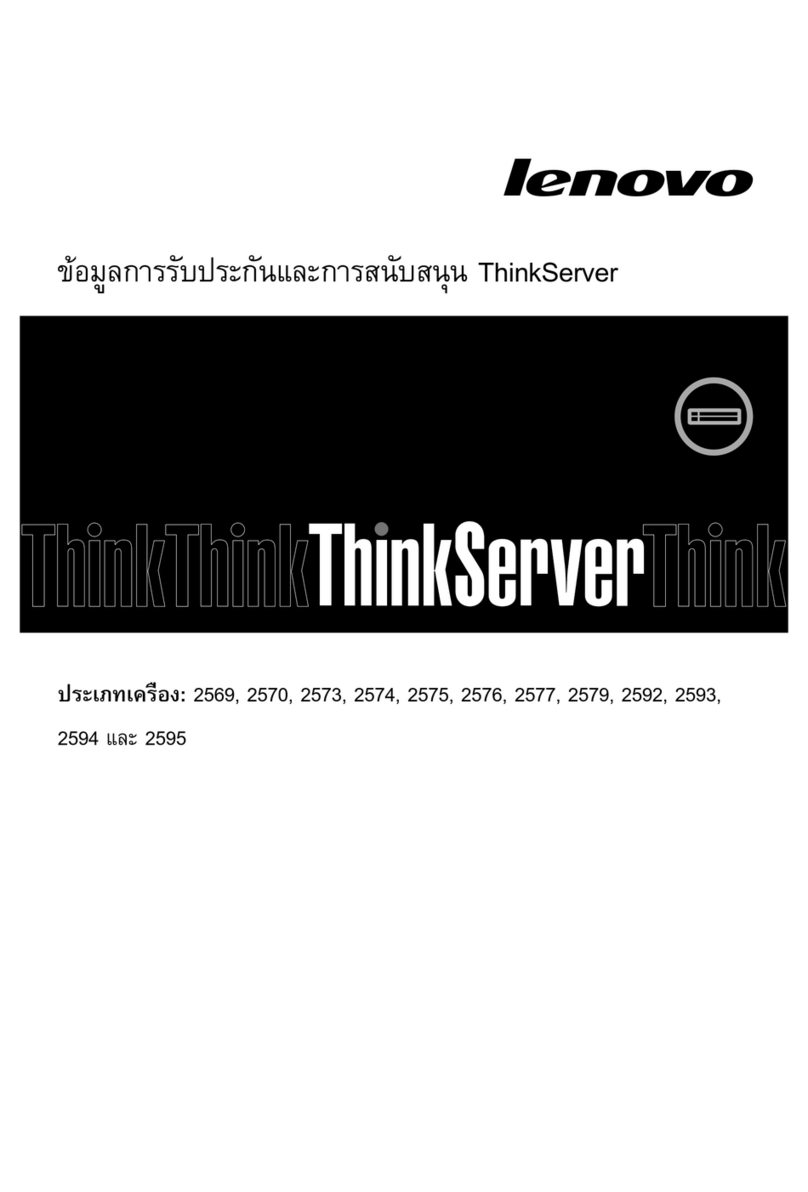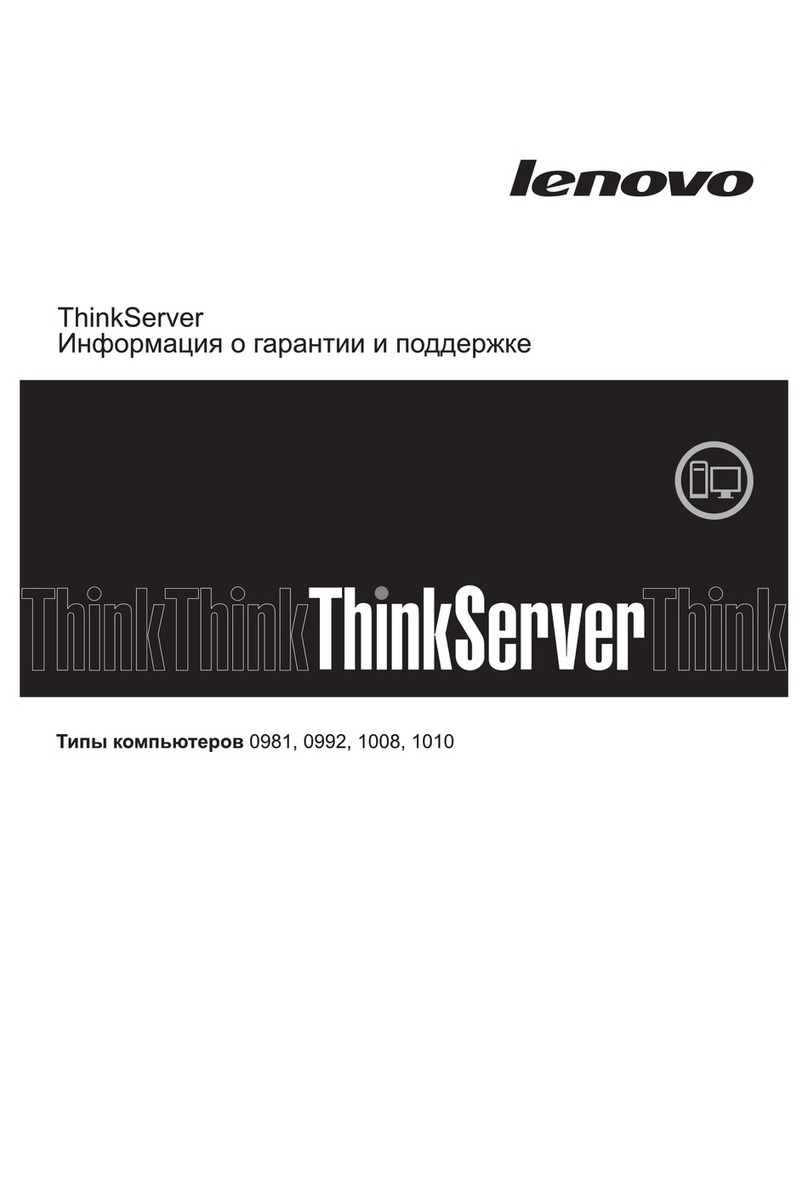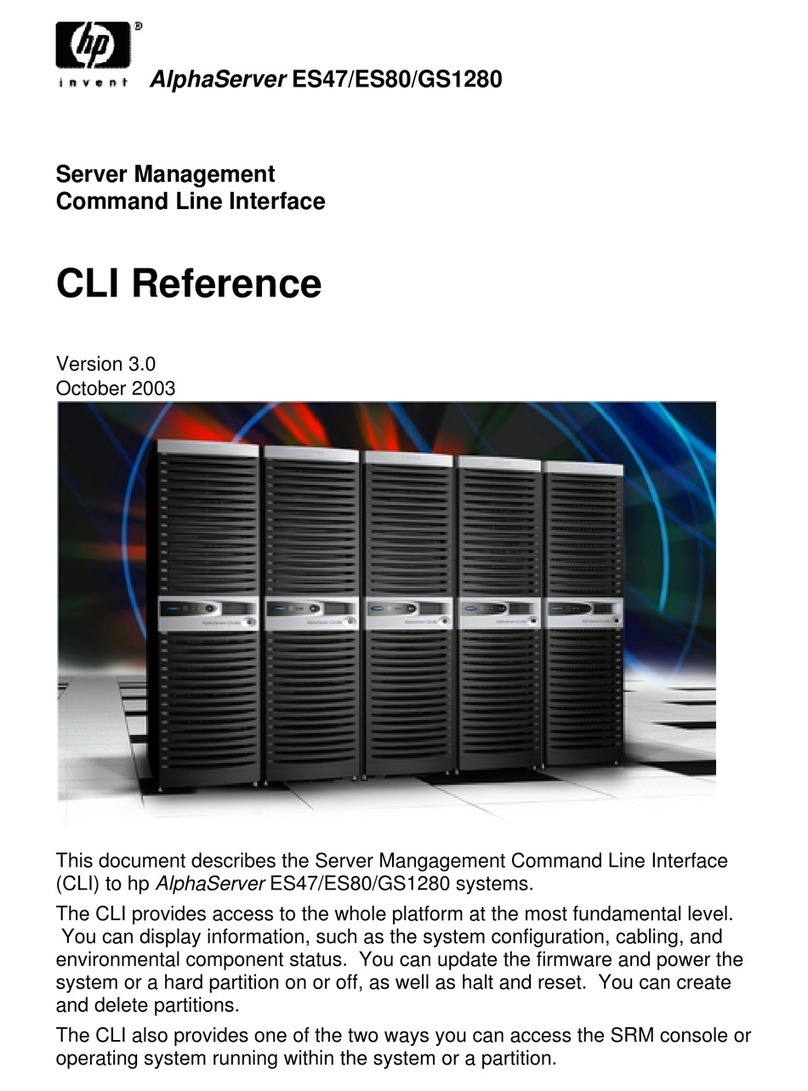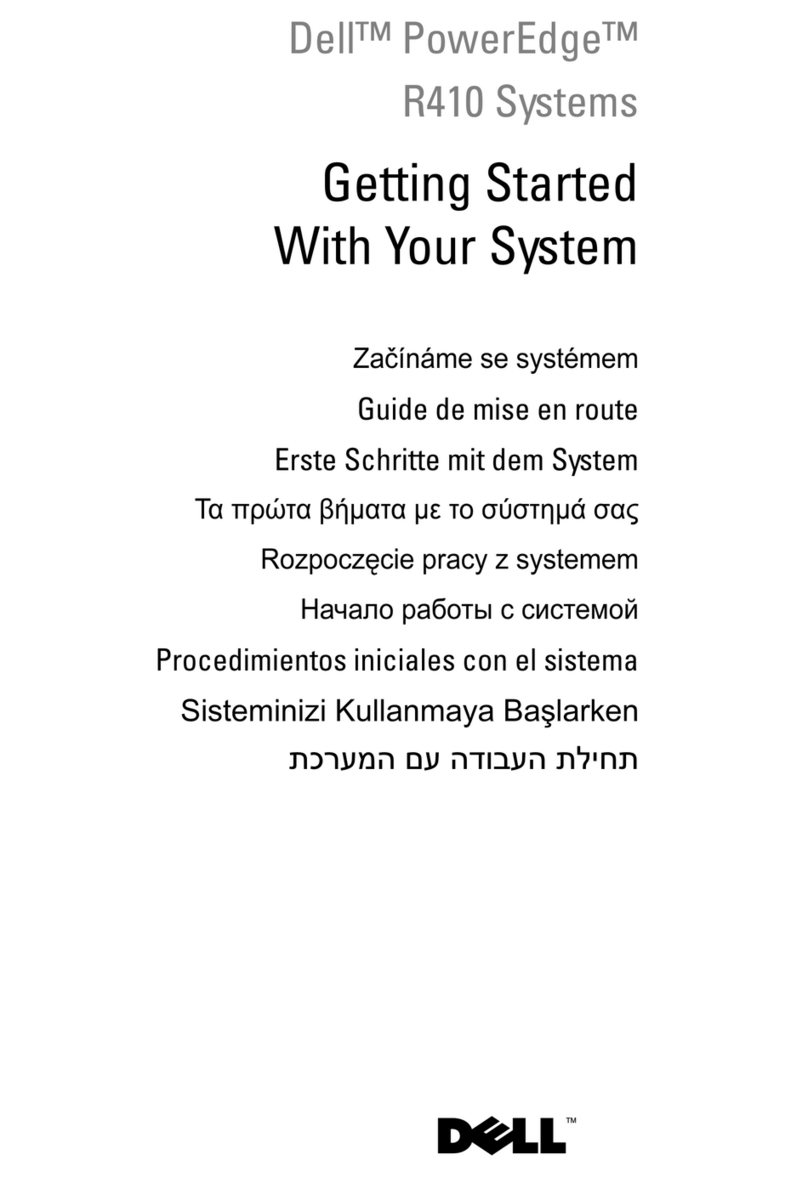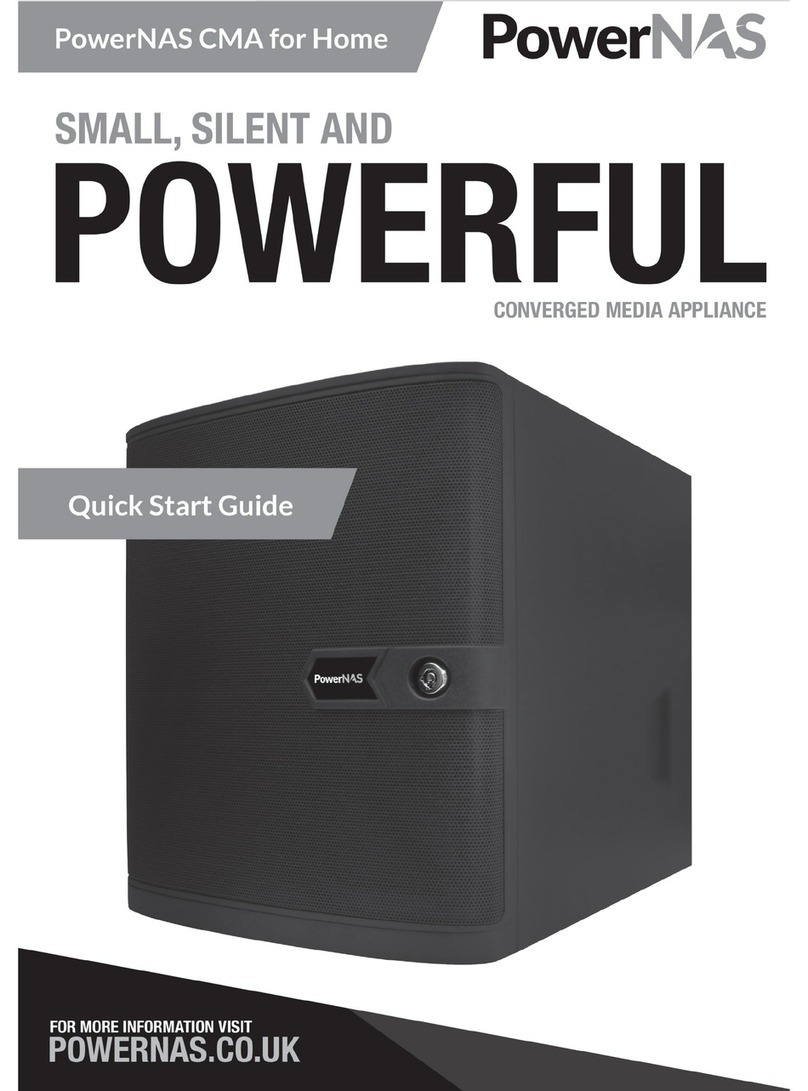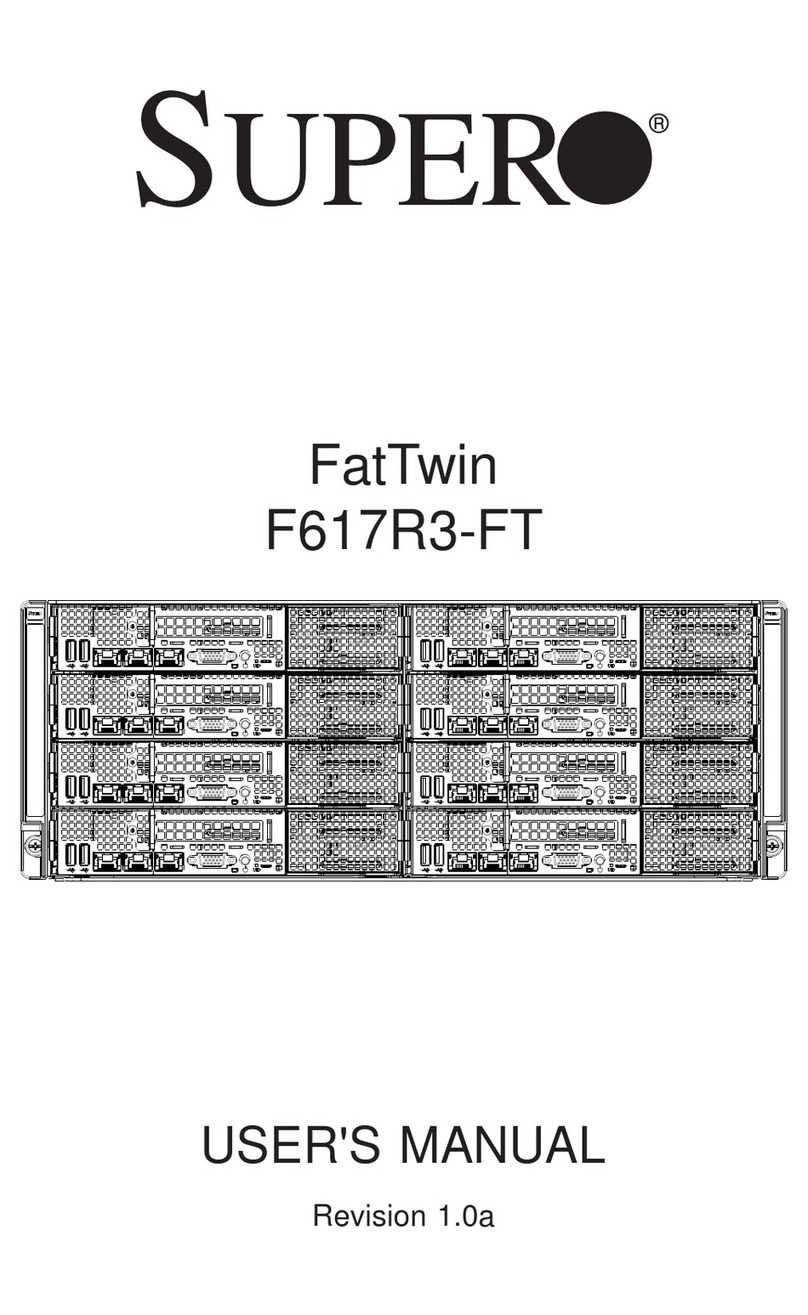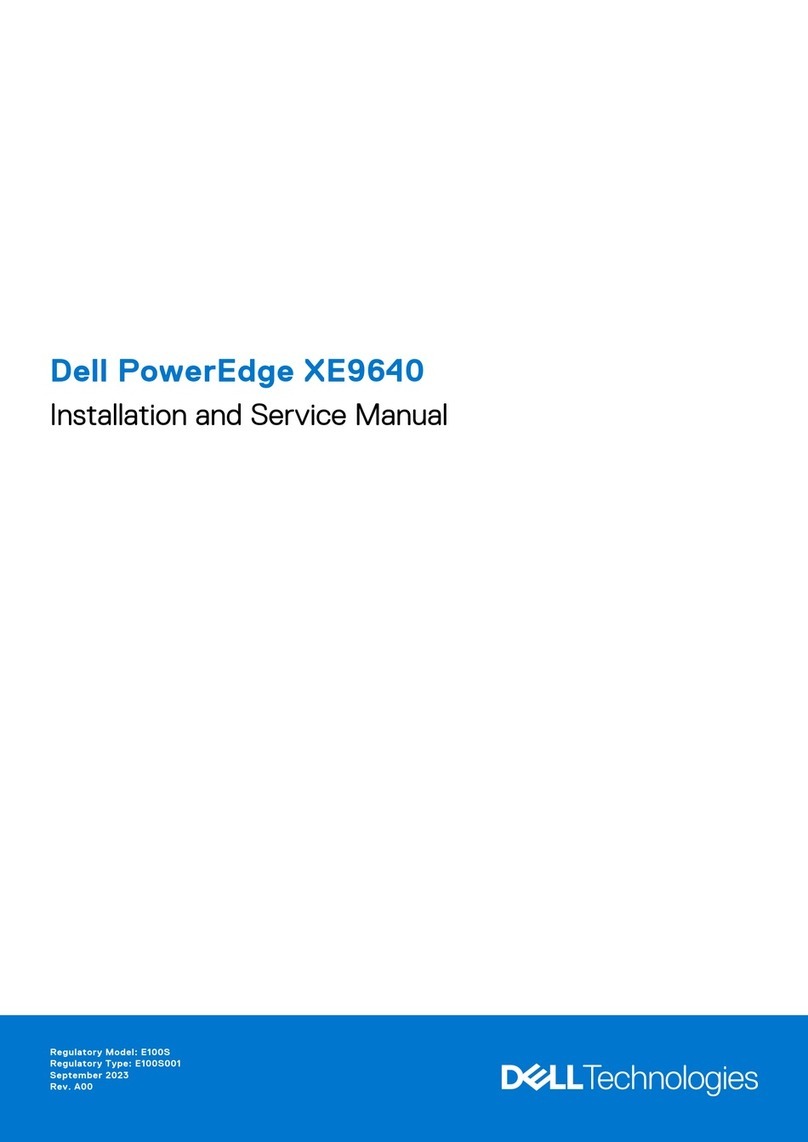
2000, Avaya Inc.
All Rights Reserved, Printed in U.S.A.
Notice
Every effort was made to ensure that the information in this book was complete and
accurate at the time of printing. However, information is subject to change.
Avaya Web Page
The world wide web home page for Avaya is:
http://www.avaya.com
Preventing Toll Fraud
Toll Fraud is the unauthorized use of your telecommunications system by an unautho-
rized party (for example, a person who is not a corporate employee, agent, subcon-
tractor, or working on your company’s behalf). Be aware that there is a risk of toll
fraud associated with your system and that, if toll fraud occurs, it can result in sub-
stantial additional charges for your telecommunications services.
Avaya Fraud Intervention
If you suspect that you are being victimized by toll fraud and you need technical assis-
tance or support, call the Technical Service Center’s Toll Fraud Intervention Hotline
at 1.800.643.2353.
Providing Telecommunications Security
Telecommunications security of voice, data, and/or video communications is the pre-
vention of any type of intrusion to, that is, either unauthorized or malicious access to
or use of, your company’s telecommunications equipment by some party.
Your company’s “telecommunications equipment” includes both this Avaya product
and any other voice/data/video equipment that could be accessed via this Avaya prod-
uct (that is, “networked equipment”).
An “outside party” is anyone who is not a corporate employee, agent, subcontractor,
or working on your company’s behalf. Whereas, a “malicious party” is Anyone,
including someone who may be otherwise authorized, who accesses your telecommu-
nications equipment with either malicious or mischievous intent.
Such intrusions may be either to/through synchronous (time-multiplexed and/or cir-
cuit-based) or asynchronous (character-, message-, or packet-based) equipment or
interfaces for reasons of:
•Utilization (of capabilities special to the accessed equipment)
•Theft (such as, of intellectual property, financial assets, or toll-facility access)
•Eavesdropping (privacy invasions to humans)
•Mischief (troubling, but apparently innocuous, tampering)
•Harm (such as harmful tampering, data loss or alteration, regardless of motive
or intent)
Be aware that there may be a risk of unauthorized intrusions associated with your sys-
tem and/or its networked equipment. Also realize that, if such an intrusion should
occur, it could result in a variety of losses to your company, including but not limited
to, human/data privacy, intellectual property, material assets, financial resources,
labor costs, and/or legal costs).
Your Responsibility for Your Company’s Telecommunications Security
The final responsibility for securing both this system and its networked equipment
rests with you –an Avaya customer’s system administrator, your telecommunications
peers, and your managers. Base the fulfillment of your responsibility on acquired
knowledge and resources from a variety of sources including but not limited to:
•Installation documents
•System administration documents
•Security documents
•Hardware-/software-based security tools
•Shared information between you and your peers
•Telecommunications security experts
To prevent intrusions to your telecommunications equipment, you and your peers
should carefully program and configure your:
•Avaya provided telecommunications systems and their interfaces
•Avaya provided software applications, as well as their underlying hardware/
software platforms and interfaces
•Any other equipment networked to your Avaya products
Federal Communications Commission Statement
Part 15: Class A Statement. This equipment has been tested and found to comply
with the limits for a Class A digital device, pursuant to Part 15 of the FCC Rules.
These limits are designed to provide reasonable protection against harmful interfer-
ence when the equipment is operated in a commercial environment. This equipment
generates, uses, and can radiate radio-frequency energy and, if not installed and used
in accordance with the instructions, may cause harmful interference to radio commu-
nications. Operation of this equipment in a residential area is likely to cause harmful
interference, in which case the user will be required to correct the interference at his
own expense.
Trademarks
See the preface of this document.
Ordering Information
Call: Avaya Publications Center
Voice 800.457.1235 International Voice +1 410.568.3680
Fax 800.457.1764 International Fax +1 410.891.0207
Write: GlobalWare Solutions
200 Ward Hill Avenue
Haverhill, MA 01835 USA
Attention: Avaya Account Management
Email: totalware@gwsmail.com
For additional documents, refer to the section in “About This Book”entitled “Related
Resources.”
You can be placed on a standing order list for this and other documents you may need.
For more information on standing orders, or to be put on a list to receive future issues
of this document, contact the Avaya Publications Center.
Obtaining Products
To learn more about Avaya products and to order products, contact Avaya Direct, the
direct-market organization of Avaya Business Communications Systems. Access their
web site at www.lucentdirect.com. Or call the following numbers: customers 1 800
451 2100, account executives 1 888 778 1880 (voice) or 1 888 778 1881 (fax).
European Union Declaration of Conformity
The “CE”mark affixed to the equipment means that it conforms to the referenced
European Union (EU) Directives listed below:
EMC Directive 89/336/EEC
Low-Voltage Directive73/23/EEC
For more information on standards compliance, contact your local distributor.
Comments
To comment on this document, return the comment card at the front of the document.
